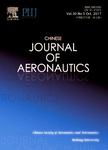An efficient aerodynamic shape optimization of blended wing body UAV using multi-fidelity models
An efficient aerodynamic shape optimization of blended wing body UAV using multi-fidelity models作者机构:Faculty of New Sciences and Technologies University of Tehran
出 版 物:《Chinese Journal of Aeronautics》 (中国航空学报(英文版))
年 卷 期:2018年第31卷第6期
页 面:1165-1180页
核心收录:
学科分类:08[工学] 082503[工学-航空宇航制造工程] 0802[工学-机械工程] 0825[工学-航空宇航科学与技术] 0801[工学-力学(可授工学、理学学位)]
主 题:Adaptive filter sequential quadratic programing(AFSQP) Adaptive robust meta-model Aerodynamic shape optimization Blended wing body(BWB) Move limit strategy Unmanned aerial vehicle(UAV)
摘 要:This paper presents a novel optimization technique for an efficient multi-fidelity model building approach to reduce computational costs for handling aerodynamic shape optimization based on high-fidelity simulation models. The wing aerodynamic shape optimization problem is solved by dividing optimization into three steps—modeling 3D(high-fidelity) and 2D(lowfidelity) models, building global meta-models from prominent instead of all variables, and determining robust optimizing shape associated with tuning local meta-models. The adaptive robust design optimization aims to modify the shape optimization process. The sufficient infilling strategy—known as adaptive uniform infilling strategy—determines search space dimensions based on the last optimization results or initial point. Following this, 3D model simulations are used to tune local meta-models. Finally, the global optimization gradient-based method—Adaptive Filter Sequential Quadratic Programing(AFSQP) is utilized to search the neighborhood for a probable optimum point. The effectiveness of the proposed method is investigated by applying it, along with conventional optimization approach-based meta-models, to a Blended Wing Body(BWB) Unmanned Aerial Vehicle(UAV). The drag coefficient is defined as the objective function, which is subjected to minimum lift coefficient bounds and stability constraints. The simulation results indicate improvement in meta-model accuracy and reduction in computational time of the method introduced in this paper.



